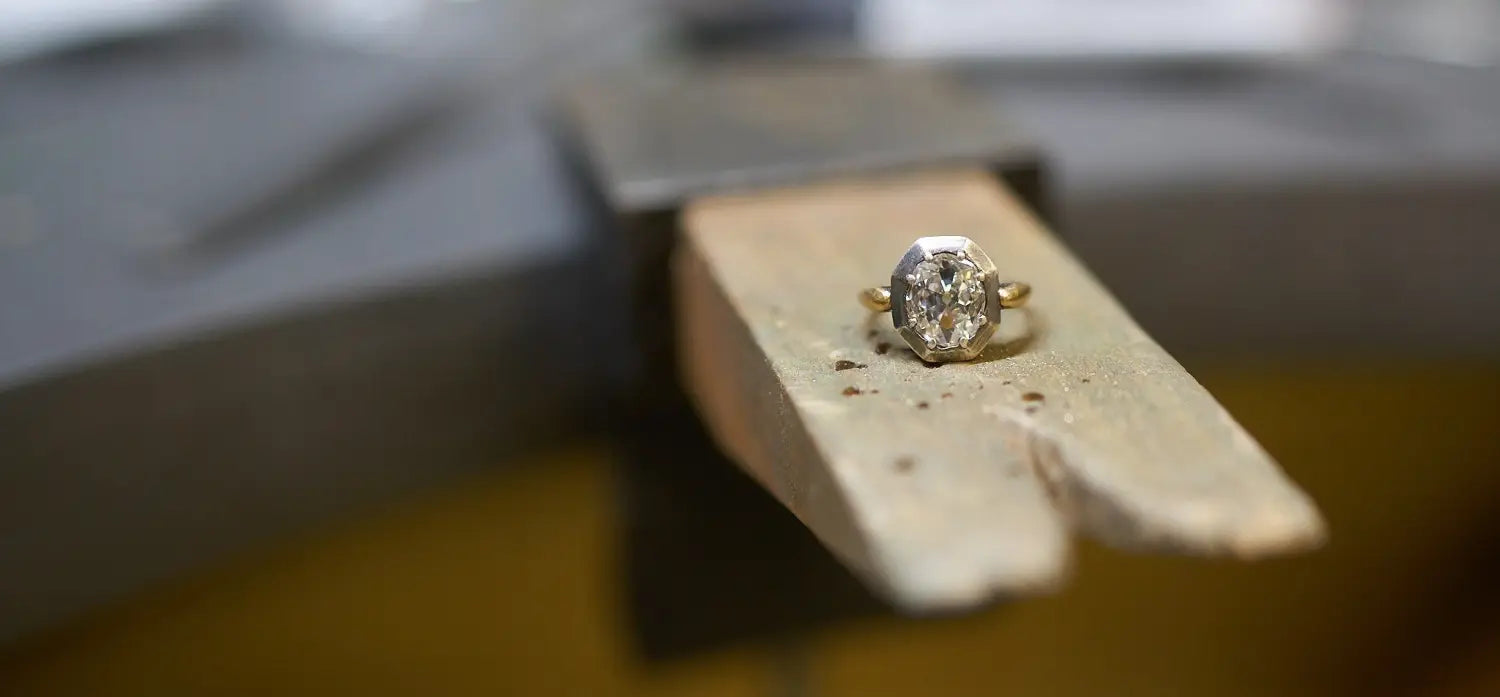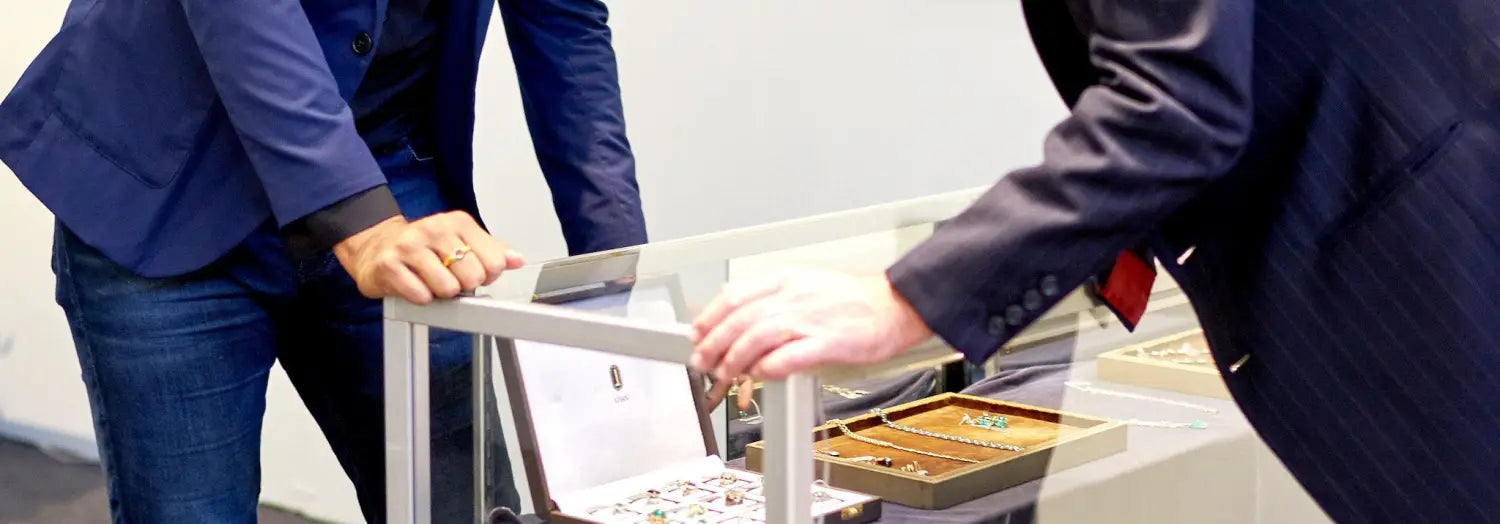Mauboussin: Paris' Four-Pointed Star
An Old Friend You May Not Know
A brand is a curious thing.
Take three similar French houses of fine jewelry: Cartier, Boucheron, and Mauboussin. Each boasts a pedigree dating back to the mid-19th century. Each has made its mark among those in the know as a leading name in the space. Each produced utterly stunning, enduringly important pieces during the Art Deco era, while effortlessly capturing — or even helping define — the hallmarks of the movement. Each still does business today.
Cartier is a globally recognized household name. Boucheron is somewhat less so, but it’s certainly well known amongst fans and followers of fine jewelry. But ask the average person on the street — and perhaps even a relatively casual jewelry fan — about Mauboussin (pronounced “Mo-Bus-On” by hapless Americans such as ourselves), and you’ll get a nearly inevitable “Moba-who?”
Mauboussin is an enduring and brilliant jewelry house that we think everyone should know about - so, we’re here to drop some knowledge!
Origin Story
Mauboussin traces its roots to Paris in 1827 — yes, nearly 200 years ago. Founded by artisan jeweler M. Rocher, the house was born at a time rocked by upheaval: coups, revolution, the violent early days of French democracy overlapping with the last days of French monarch… perhaps not the perfect time for a new house of fine jewelry. Nevertheless, the company weathered turbulent times and the house eventually passed into the hands of Rocher’s cousin and collaborator, Jean-Batpiste Noury.
Noury brought on his nephew Georges Mauboussin as an apprentice, and by 1898, the company was under Mauboussin’s sole control. The company had survived and established itself in what would become a global hub of art and design: the City of Light, 1920s Paris.

M. Rocher, founder of Mauboussin (photo source: Mauboussin Singapore)
An Art Deco Giant
Around the turn of the 20th century, Mauboussin took off, and its launch into fame followed them well into the 1920s and 30s. After exhibiting at World’s Fairs in the style capitals of Europe throughout the 1870s and receiving a medal at the 1878 exhibition, Mauboussin gained credibility as one of the leading fine jewelry houses of Paris.
In 1925, Mauboussin cemented itself as a serious force in Art Deco design after exhibiting at the 1925 Paris World’s Fair. This fair was actually called the Exposition des Arts Décoratifs - it was, in fact, the show that gave rise to the term “Art Deco”. Here, Mauboussin was awarded the Legion of Honor and the expo’s grand prize, beating out hundreds of the most relevant and creative marques of the era to take top honors. To this day, Mauboussin’s reputation rests in part on its status as one of the key players in the Art Deco movement.
Star in the Spotlight
In the early to mid-20th Century, Mauboussin garnered attention by arranging for Mauboussin pieces to be worn by the biggest film stars of the day. As Hollywood starlets were seen sporting the company’s signature fine cabochon gemstones and showing off its luxurious designs, the marque’s cachet continued to burgeon. Marlene Dietrich was often rumored to have a secret passageway from her house to a Mauboussin showroom — in our heart of hearts, we very much want to believe that’s true.
Marlene Dietrich wearing Mauboussin jewelry (photo source: JCK Magazine)
The firm also continued courting families of European, African, and Indian nobility (counting among its clients the Maharajah of Indore and Queen Nazlie of Egypt), as it had done since the House Noury era. Some even called the company “the Jeweler of Kings.”
Buying an Antique Signed Mauboussin: Your Quick Guide
Hunting for an antique signed Mauboussin piece is like searching for treasure - it can be difficult, but when you find it, the result is priceless. When searching for a piece, here’s what you should look for:
The Maker’s Mark
Most authentic signed antique pieces from well known houses will bear a distinctive and identifiable maker’s mark. Mauboussin’s mark looked like this:

(photo source: Leah Gordon)
After a short-lived New York retail launch that unfortunately coincided with the Great Crash of 1929, Mauboussin entered a partnership with U.S. jewelers Trabert & Hoeffer, who acquired much of Mauboussin’s unsold U.S. inventory when the firm left the country. Pieces sold through this partnership bear the maker’s mark “TRABERT & HOEFFER – MAUBOUSSIN.” They were often original American designs and have a noteworthy place of their own in the history of important jewelry.

(photo source: Lang Antiques)
Construction
Pieces from this era of fine jewelry also have an unmistakable quality and seriousness to construction that makes them a joy to own: there’s a heft and density to the piece that screams luxury - a deftness of design that says a master craftsman built it. When looking at one of these pieces, you might wonder: How in the world did they get the back side of it to look as good as the front?
We’ll often find ourselves just as impressed with the back of a piece from this era — less committed makers may allow the back side to be a bit of a utilitarian mess compared to the front. Not a Mauboussin piece from the 1930s, though. You’ll look back there and marvel at the intricacy, the detail, the cleanliness of its construction. There is no wasted metal, no hint of sloppiness.
We always say that the best Estate pieces move like fabric against the skin. Once again, this quality is a tribute to the brilliant artistry and expertise of the makers. Herky-jerky action between linked segments can be a sign of a piece in poor condition — or a fake.
An Old Star, but a Bright One
So, if you didn’t know about Mauboussin before, now you do! The brand is still considered one of the best, and today, it operates mainly in Europe with strong sales in Asia and the Middle East. But it’s not their modern day activities that concern us — we’re still busy paging through the vintage images we dug up researching this post. This is a marque that’s been around since just after Napoleon made his exit. It’s a brand that made its name not only as an example of the finest in materials use and construction, but also as a celebrated design leader in the Art Deco movement. This is a firm that’s churned out countless memorable and important pieces of high jewelry. Say it with us: Mauboussin!
(Featured image source: Expertissim)


